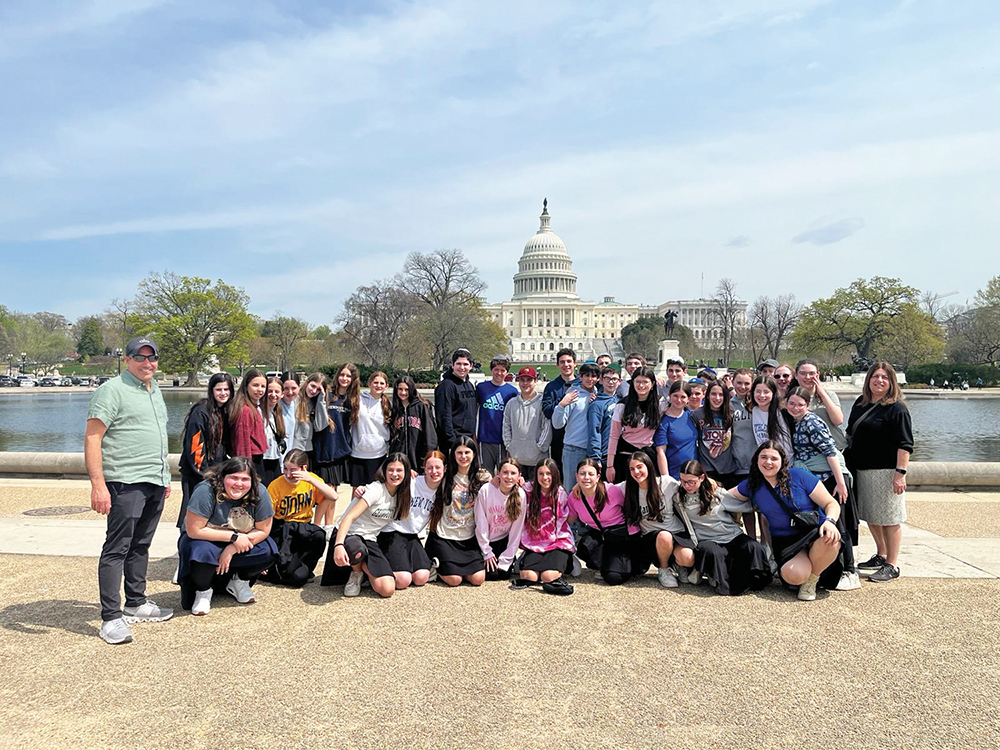
Is this true? Yonah 3:3 describes Nineveh as an exceedingly great city, a three days’ journey. The Gemara (Pesachim 94b) states that an average person can walk ten parsah, the equivalent of 40 kilometers in one day. This seems to indicate that Nineveh was 120 kilometers wide.
The problem is, as noted by Professor Uriel Simon, that the archaeological evidence indicates that Nineveh was far smaller than this. Professor Simon notes that academics view as certain the identification of ancient Nineveh with current-day Mosul, Iraq. The evidence of this to a great extent is that Jews and non-Jews alike maintain a tradition that the burial place of Yonah lies near Mosul.
Professor Simon writes: “The city walls [of Nineveh], constructed by Sennacherib in the seventh century B.C.E. and whose course remains clearly visible, are 12 kilometers long; the city’s maximum width is 5 kilometers.”
This information appears as well on the Nineveh entry on Wikipedia. “The total area of Nineveh comprised about 7 square kilometers (1,730 acres).”
How might we reconcile the archaeological finds with Sefer Yonah’s implication that Nineveh was 100 kilometers wide?
Ibn Ezra
Ibn Ezra already was bothered by the large dimensions of Nineveh. He argues that the circumference of Nineveh is three days long and not its diameter. Thus Nineveh is only around 40 kilometers in diameter, though 40 kilometers is still quite large for an ancient city. When Yonah is described (3:4) that he went into the city a walk of one day, this refers to the diameter of the city, which is approximately one third of its circumference (recall that the circumference is pi multiplied by the diameter).
While Ibn Ezra mitigates our problem, he certainly does not solve it, since even the circumference of Nineveh is far smaller than 120 kilometers.
Jack Hodari suggests that the three days refers to the spread of influence that the King of Nineveh had in his domain. The King of Nineveh’s sphere of influence might have extended from the Tigris until the city Aski Kalah (both located in the broader area of Nineveh/Mosul) on the smaller river to the east, a total distance of approximately 50 kilometers. This roughly fits the distance Ibn Ezra proposed.
Jack also suggests that the description of Nineveh (Yonah 3:3) as an “ir gedolah, large city” refers to Nineveh’s large regional influence and authority rather than its physical size. The term gadol (large) in Tanach at times refers to influence. Examples include:
אֵינֶ֨נּוּ גָד֜וֹל בַּבַּ֣יִת הַזֶּה֮ מִמֶּנִּי֒ וְלֹֽא־חָשַׂ֤ךְ מִמֶּ֙נִּי֙ מְא֔וּמָה כִּ֥י אִם־אוֹתָ֖ךְ בַּאֲשֶׁ֣ר אַתְּ־אִשְׁתּ֑וֹ וְאֵ֨יךְ אֶֽעֱשֶׂ֜ה הָרָעָ֤ה הַגְּדֹלָה֙ הַזֹּ֔את וְחָטָ֖אתִי לֵֽאלֹקִֽים׃
He wields no more authority in this house than I, and he has withheld nothing from me except yourself, since you are his wife. How then could I do this most wicked thing, and sin before God?” (Bereishit 39:9)
וַיִּתֵּ֧ן יְקוָ֛ק אֶת־חֵ֥ן הָעָ֖ם בְּעֵינֵ֣י מִצְרָ֑יִם גַּ֣ם ׀ הָאִ֣ישׁ מֹשֶׁ֗ה גָּד֤וֹל מְאֹד֙ בְּאֶ֣רֶץ מִצְרַ֔יִם בְּעֵינֵ֥י עַבְדֵֽי־פַרְעֹ֖ה וּבְעֵינֵ֥י הָעָֽם׃
The Lord disposed the Egyptians favorably toward the people. Moreover, Moses himself was much esteemed in the land of Egypt, among Pharaoh’s courtiers and among the people. (Shemot 11:3)
Hyperbole
As discussed above, Chazal (Chullin 90b and Tamid 29a) as well as Rambam (Moreh Nevuchim 2:47) discuss the Tanach’s use of hyperbole, including city walls that reach the heavens (Devarim 1:28) and the earth cracking from the noise of a party (Melachim I 1:40). While these passages are obvious exaggerations, they are by no means lies since their hyperbolic nature is easily discerned.
One could argue that the Tanach’s description of the size of Nineveh is hyperbolic. It is intended to convey the great size of Nineveh as noted in Yonah 3:3, which refers to Nineveh as “a great city to God.” However, one wonders what purpose would be served by describing Nineveh in such an overstated manner.
Professor Simon’s Approach
The Torah Academy of Bergen County students found Professor Simon’s explanation most compelling. He explains: “The reference is not to the duration required to cross the city in a straight line but to the period needed to traverse its streets and byways so that all the inhabitants can hear his proclamation.”
The Talmidim found this a compelling explanation, considering that Yonah would likely have spoken to and interacted with Nineveh’s inhabitants more than the mere five words that are recorded in Yonah 3:4.
What emerges then is the possibility that the description of Yonah walking into the city a walk of one day conveys to the reader that he did not complete his mission of interacting with each of the inhabitants of Nineveh. Perhaps completing only one third of the mission is an indication of passive aggressive behavior on the part of Yonah. Perhaps Yonah is trying to sabotage his mission in the hope that Nineveh will not repent. This latter option might be the reason why Yonah did not attempt to gain an audience with the king. Of course, the plan backfired since the word of Yonah spread like wildfire and impacted the entire city, despite Yonah not making a full effort to succeed.
Aryeh Krischer suggests that perhaps the people of Nineveh were so receptive to Yonah’s message that it only took one day for the message to spread mouth-to-mouth across the whole city. Thus we are told “Vayachel, And he began” (Yonah 3:4)—Yonah was in middle of his mission when it became a success. He did not even have the chance to finish it himself.
Conclusion
Even absent the evidence from artifacts, it is counterintuitive that Nineveh is 120 kilometers wide. Thus, the idea of its being a three days’ walk needs a more compelling explanation, which Professor Simon provides. His explanation allows us to imagine in our mind’s eye the effort Yonah made and did not make in his reluctant fulfillment of Hashem’s command to address Nineveh. Ultimately, though, “Rabot Machshavot BeLev Ish VaAtzat Hashem Hi Takum,” “there are many thoughts in a person’s head, but what will emerge triumphant is Hashem’s plan” (Mishlei 19:21).
We can extract from this discussions two lessons for Yom Kippur. From Yonah’s angle, perhaps trying hard to avoid fulfilling his mission, we see almost cynically that designs against Hashem’s will cannot hope to succeed. We may learn from this that in our own lives, trying to thwart Hashem is hopelessly futile and we may as well try to follow His will, since nothing else can hope to succeed. On the other hand, the complement to this lesson we see from Nineveh’s response: Once we take even small steps toward fulfilling Hashem’s mission, our success has the potential to blossom and spread far faster than we would have dreamed. The work of three days can be done in one. What powerful ideas to have on the Day of Judgment! Try to oppose Hashem and a cynical slap in the face awaits, but strive for Hashem’s will and unparalleled success will surely follow.
By Rabbi Haim Jachter
Rabbi Haim Jachter is the spiritual leader of Congregation Shaarei Orah, the Sephardic Congregation of Teaneck. He also serves as a rebbe at Torah Academy of Bergen County and a dayan on the Beth Din of Elizabeth.













